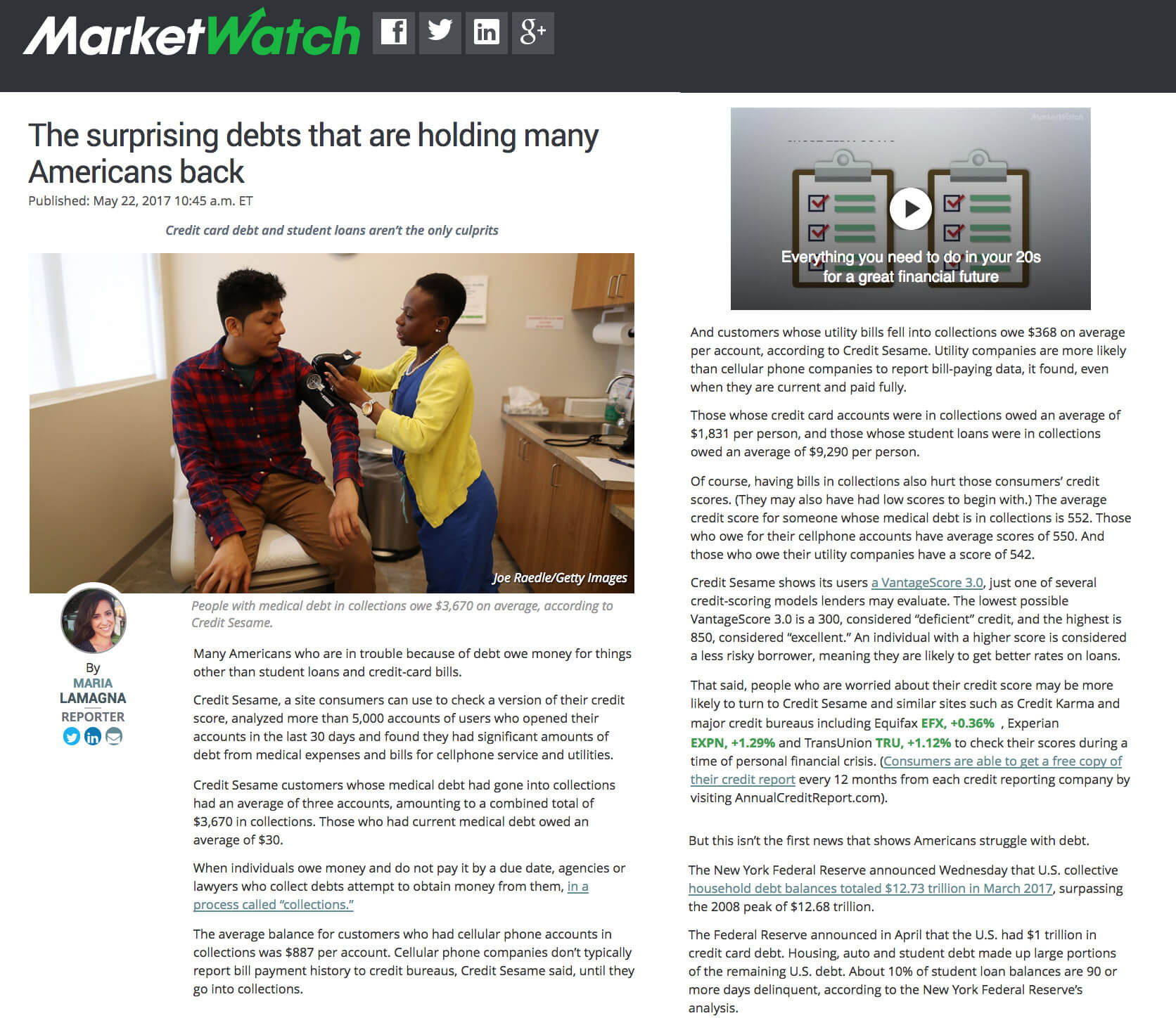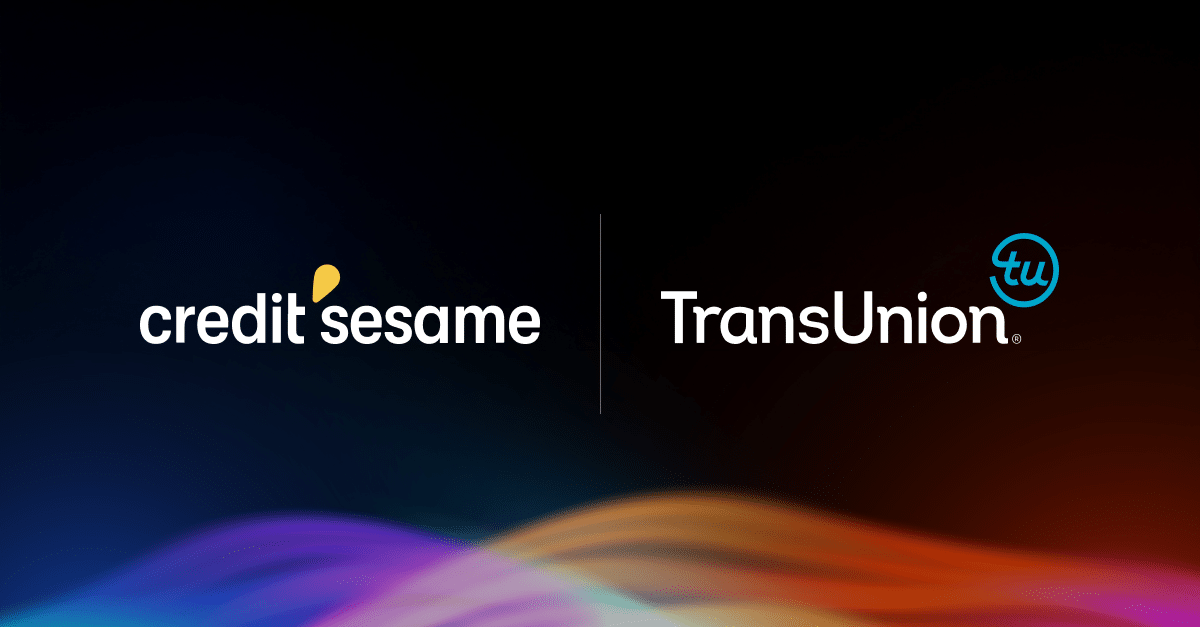Editor’s note: The following story was originally published on MarketWatch, who used Credit Sesame data to produce “The surprising debts that are holding many Americans back.”
Credit Sesame viewed and analyzed over 5,000 new accounts (less than 30 days old) to note debts for data. Of these accounts, most had debt from medical expenses, cell phone service, and utilities, with a significant percentage being in collections. While student loans and credit card debts can also go into collections, these accounts were not as prevalent as expected.
The Surprising Debts That Are Holding Many Americans Back
by Maria LaMagna
Many Americans who are in trouble because of debt owe money for things other than student loans and credit-card bills.
Credit Sesame, a site consumers can use to check a version of their credit score, analyzed more than 5,000 accounts of users who opened their accounts in the last 30 days and found they had significant amounts of debt from medical expenses and bills for cellphone service and utilities.
Customers whose medical debt had gone into collections had an average of three accounts, amounting to a combined total of $3,670 in collections. Those who had current medical debt owed an average of $30. When individuals owe money and do not pay it by a due date, agencies or lawyers who collect debts attempt to obtain money from them, in a process called “collections.”
The average balance for customers who had cellular phone accounts in collections was $887 per account. Cellular phone companies don’t typically report bill payment history to credit bureaus, the study said, until they go into collections.
And customers whose utility bills fell into collections owe $368 on average per account, the study concluded. Utility companies are more likely than cellular phone companies to report bill-paying data, it found, even when they are current and paid fully. Those whose credit card accounts were in collections owed an average of $1,831 per person, and those whose student loans were in collections owed an average of $9,290 per person.
Of course, having bills in collections also hurt those consumers’ credit scores. (They may also have had low scores, to begin with.) The average credit score for someone whose medical debt is in collections is 552. Those who owe for their cell phone accounts have average scores of 550. And those who owe their utility companies have a score of 542.
Credit Sesame shows its users a VantageScore 3.0, just one of several credit-scoring models lenders may evaluate. The lowest possible VantageScore 3.0 is a 300, considered “deficient” credit, and the highest is 850, considered “excellent.” An individual with a higher score is considered a less risky borrower, meaning they are likely to get better rates on loans.
That said, people who are worried about their credit score may be more likely to turn to Credit Sesame and similar sites such as Credit Karma and major credit bureaus including Equifax EFX, Experian EXPN, and TransUnionTRU, to check their scores during a time of personal financial crisis. (Consumers can get a free copy of their credit report every 12 months from each credit reporting company by visiting AnnualCreditReport.com).
But this isn’t the first news that shows Americans struggle with debt. The New York Federal Reserve announced Wednesday that U.S. collective household debt balances totaled $12.73 trillion in March 2017, surpassing the 2008 peak of $12.68 trillion.
The Federal Reserve announced in April that the U.S. had $1 trillion in credit card debt. Housing, auto and student debt made up large portions of the remaining U.S. debt. About 10% of student loan balances are 90 or more days delinquent, according to the New York Federal Reserve’s analysis.
When consumers struggle with low credit scores, it makes credit more expensive in the future, including rates on mortgages and other types of loans. It also means they have fewer options for credit cards that offer cash back and other perks. And it may limit rental housing options, as landlords frequently check credit scores before choosing tenants.



















